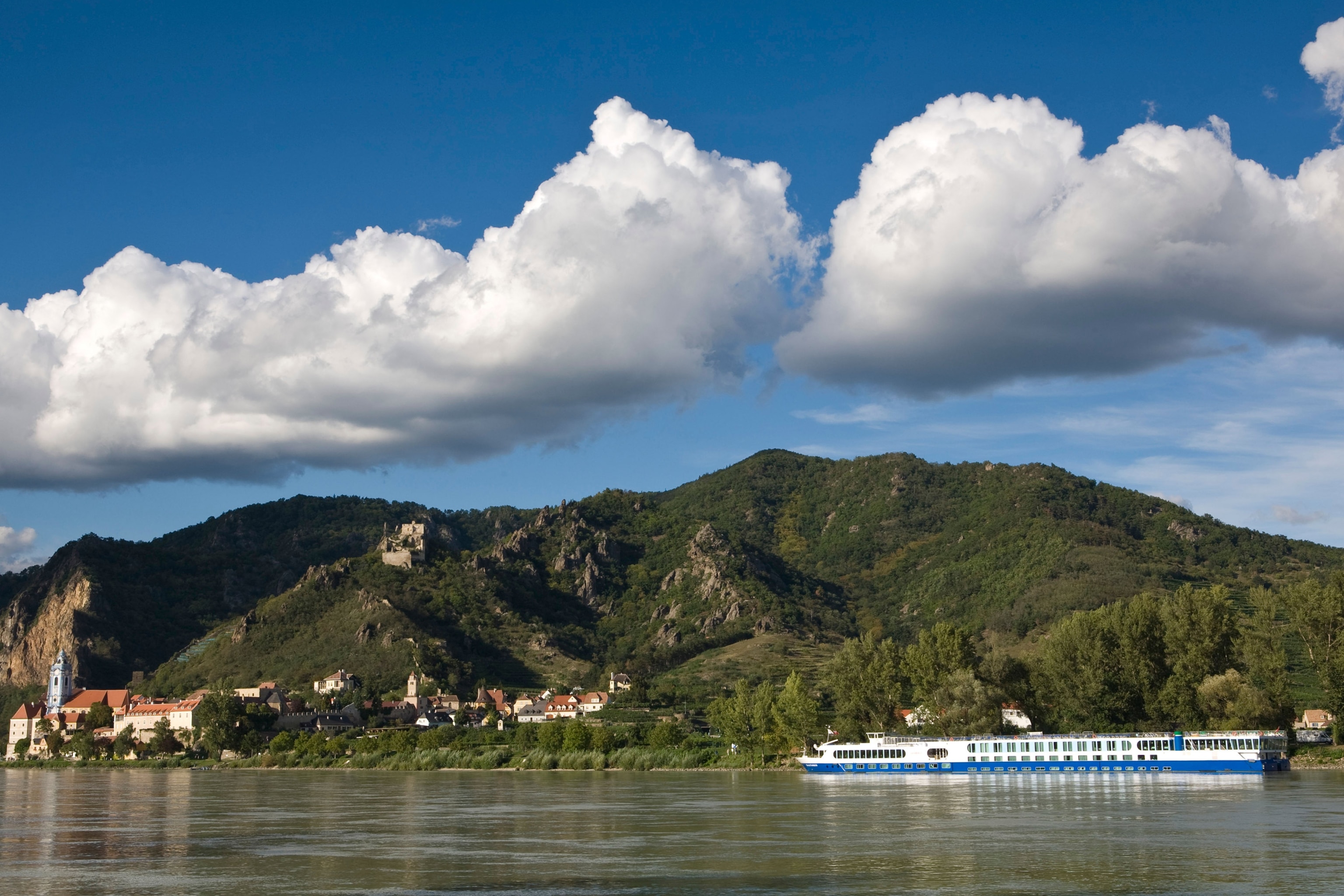
River Cruising Beyond the Port in Austria
From boat to bike to pub crawl, explore these Austrian valleys and cities and make this adventure your own.
As dozens of river cruises dock daily at popular ports lining the Danube, ships are starting to look beyond the typical stops, stepping up their game when it comes to European excursions. The thousand-year-old gilded Melk Abbey? So 2012. Admire this baroque beauty from the riverside on a bike ride instead. And those bikes are not the kind that come with a motor, either. Lines like Avalon Waterways are skewing younger in terms of their river cruisers and have more active-themed excursions, including food-focused pub crawls and paddling trips down the Danube. Here are four of Austria’s more off-the-beaten-path ports that take river-cruise sightseeing beyond the cliché checklist.
Linz
Joining the ranks of cities like Lyon, Sapporo, and Tel Aviv, Linz, a UNESCO City of Media Arts, is teeming with futuristic touches in artwork and architecture. Upper Austria’s capital is home to the Ars Electronica Center—a pioneer in the world of cyber arts—in addition to the world’s largest outdoor gallery of graffiti artwork, painted on the walls of industrial buildings and homes lining the harbor.
To really get a scope of the city, take an urban hike to Anton Bruckner Private University for Music, Drama, and Dance overlooking Linz, where you can play beekeeper for an afternoon, assisting with the hives and sampling honey made right in the meadows surrounding the school. Come nightfall, set off around town for a sophisticated version of a university tradition: a pub crawl, sampling regional specialties and street food, such as the red currant jam-filled linzer torte and leberkäs, a kaiser roll sandwich stuffed with meatloaf.
Wachau Valley
There are a few ways to cruise between Melk and Krems through the movie scene-like villages lining the Wachau Valley: hiking, biking, or canoeing. Hop on a canoe from Spitz and paddle your way down the Danube and its tributaries, sightseeing on a river safari, or hit the bike trails along the banks, cycling on a three-hour tour from Spitz to Krems and picnicking like a local on the way. The route curves through camera-ready towns with the perfect vantage points over the river. One that’s worth the stop is Dürnstein, known for its landmark blue tower spiraling from the former Augustinian monastery. If you have time, make the 45-minute hike up to the town’s namesake, Burgruine Dürnstein, where the ruins of a medieval stone castle are perched on a rocky cliff overlooking the water. Only the foundation of the castle remains, but it’s said to be the spot where Richard the Lionheart was held captive by the duke of Austria, Leopold V, during the Third Crusade.
Wachau is also a hot winemaking region, known for producing Austrian dry whites like Grüner Veltliner and Riesling on steep hills that you can cycle or hike through, stopping en route for tastings. If you’re more into the culinary finds, there’s one fruit that should be on your radar: apricot. Grown in the valley for more than 4,000 years, apricots are blended into everything from brandies to baked goods, and you can learn the tricks firsthand from the masters themselves, spending a day with farmers on a local apricot orchard.
Grein
The medieval riverside town of Grein, sitting at the entrance of the Strudengau Valley, has a few claims to fame, including being home to Austria’s oldest theater and residential castle. In the center of town sits the 167-seat bourgeois theater, built into the town hall’s former granary in 1791. The theater looks exactly the same today as it did more than 200 years ago–complete with sperrsitze, or lockable seats, and a toilet that’s separated from the stage only by a curtain.
- National Geographic Expeditions
After a private performance, head to the more than 500-year-old Greinburg Castle, looming regally above the village. It was once owned (albeit briefly) by Queen Victoria of England but is now privately owned by the ducal House of Saxe-Coburg and Gotha. Brush elbows with royalty over a champagne toast and tour of the grounds, where each room is more impressive than the next. One room a photo won’t do justice is the Sala Terrena (Stone Theater), named for its arched mosaic walls crafted entirely out of pebbles from the Danube.
Aschach
The market town of Aschach in Upper Austria isn’t a typical stop in the Danube Valley, but it makes for the perfect starting point for one of the most scenic hikes in the region. The three-hour trek weaves through fields and the forest Sauwald, winding upward to the viewpoint at Schlögener Schlinge, where you can spot your river-cruise ship snaking around the Danube’s largest horseshoe-shaped loop below.
One of the dreamiest aspects of river cruising is catching the view of the scenery sweeping by as you drift along the water. Avalon, for example, is just one of the lines making more time for cruising by daylight, so you can catch the most scenic stretches of the river from your stateroom balcony. Then, come nightfall, when you’re docked right in town, you can set off and explore port at your own pace.





